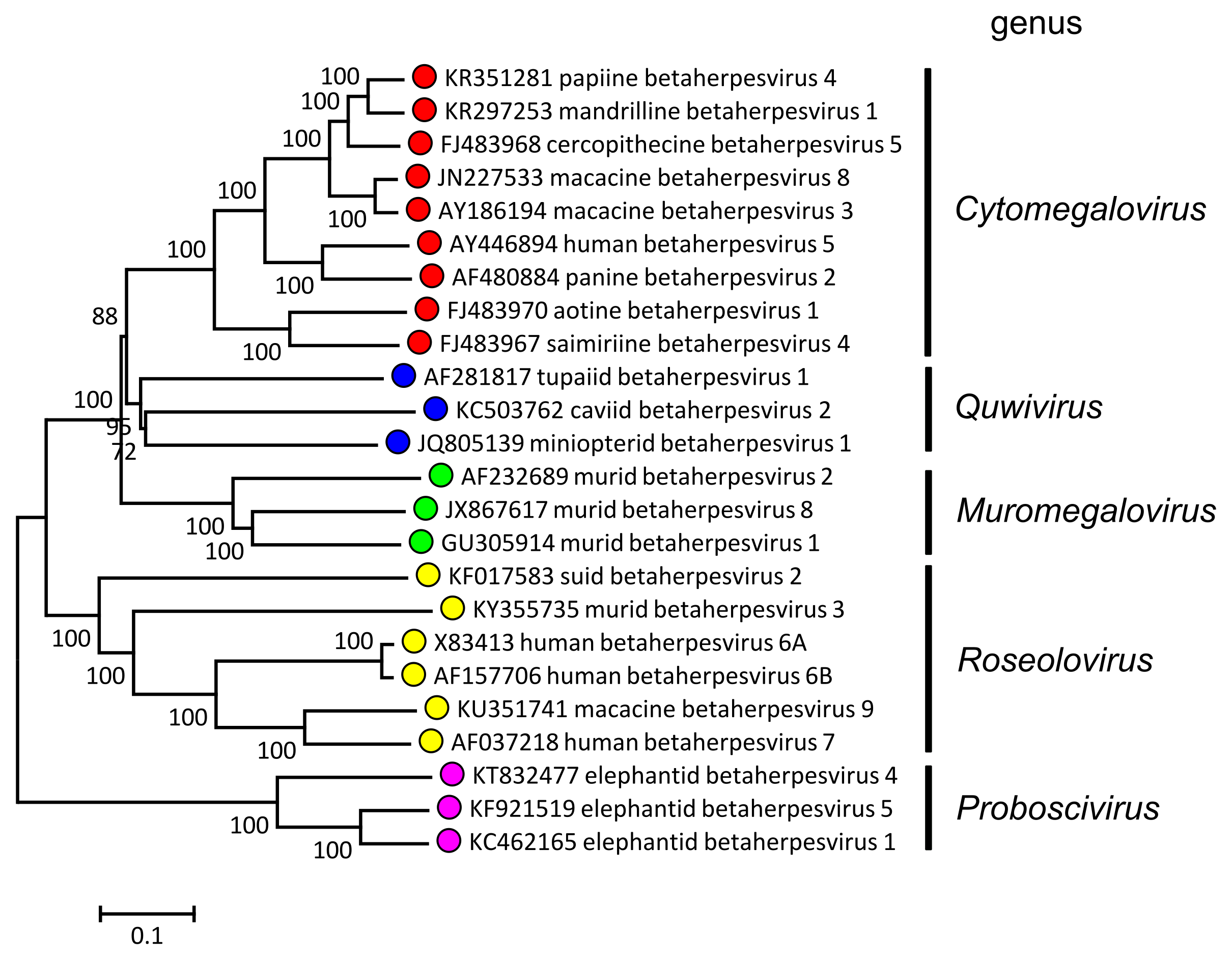Family: Orthoherpesviridae
Subfamily: Betaherpesvirinae
Distinguishing features
The predicted amino acid sequences of members form a distinct lineage within the family (Figure 1. Betaherpesvirinae). Genes related to gene US22 of human cytomegalovirus (HCMV in the species Cytomegalovirus humanbeta5), known collectively as the US22 family, are characteristic of the subfamily. Most members have a class 1 or class 4 genome architecture (Figure 2.Orthoherpesviridae and Figure 4.Orthoherpesviridae) and a moderate G+C content of 45–60%. The genomes of chimpanzee cytomegalovirus (CCMV in the species Cytomegalovirus paninebeta2) and HCMV are the largest in the family, at 241 kbp and 236 kbp, respectively. Splicing is more common than in members of the subfamily Alphaherpesvirinae.
 |
| Figure 1. Betaherpesvirinae. Phylogenetic relationships within the subfamily Betaherpesvirinae. See the legend to Figure 1.Alphaherpesvirinae for details. This phylogenetic tree and corresponding sequence alignment are available to download from the Resources page. |
Members are species-specific in natural infection and cell type-specific in culture. The growth cycle is slow, and virus tends to remain cell-associated. Infection is often clinically non-apparent in immunocompetent hosts. In some instances, latent infection has been associated with cells of the monocyte series.
Genus demarcation criteria
See discussion under family description.
